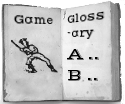The Union Hall Game of Ball
| Game | The Union Hall Game of Ball |
|---|---|
| Game Family | Baseball |
| Location | NY |
| Regions | US |
| Eras | Predecessor, 1800s |
| Invented | Yes |
| Tags | |
| Description | A game they evidently knew as "base ball" was played by the students of the Union Hall Academy in Jamaica (Queens County, NY) well before the New York game began its spread in the mid 1850s. Two students (Mills and Cogswell) who played the game in the early 1850s exchanged letters about it in 1905, both of them early members of the Knickerbocker Club. (Excerpts are provided by John Thorn below.) The letters reveal these remembered features: [] Plugging runners to put them out [] Three bases, the first and third near that batter's station. [] Use of foul territory -- its details not supplied [] Flat bats [] Flies caught on one bounce counted as outs [] An all-out-side-out rule for ending an inning [] An end-of-inning Lazarus Rule (three consecutive homers) for staying on offense A third Union Hall student was William Wheaton (born 1814), who would have been at the school several years before Mills and Cogswell. Wheaton recalled that in 1837, as a member of the Gotham Club at age 22 or 23, the Gotham "decided to remodel three-cornered cat and make a new game," and started by eliminating plugging. Thus, it seems plausible that the game played at Union Hall may have been a form of three-old-cat, perhaps evolving over time. By 1850, of course, the Knickerbockers were playing intramural games elsewhere in New York. It also seems possible that foul ground was a Union Hall innovation prior to the formation of the Gotham Club in 1837.
|
| Sources | On Mills and Cogswell letters: John Thorn, Baseball in the Garden of Eden (Simon and Schuster, 2011), pages 27 and 28. On the 1887 Wheaton article in the San Francisco Examiner: Randall Brown, How Baseball Began, National Pastime, number 24 (2004), pages 52-54. |
| Source Image | [[Image:|left|thumb]] |
| Comment |
Was this schoolyard game a significant step in the evolution toward modern base ball? We welcome input on the nature and place of the Union Hall game in the evolution of modern base ball. Protoball has seen many references to what amounts to foul territory in single wicket cricket, but all of them seem to simply disallow base-running when a hit ball goes past the batter. Was the use of foul ground for forward hits common in American ballplaying? Edit with form to add a comment |
| Query | Edit with form to add a query |
| Has Supplemental Text | Yes |
Comments
<comments voting="Plus" />
Supplemental Text
Email from John Thorn to Protoball, January 4, 2016:
In a letter to William S. Cogswell dated January 10, 1905, A. G. Mills, just beginning to accumulate data for his Commission’s report, wrote:
"Among the vivid recollections of my early life at Union Hall Academy [where Knickerbocker William R. Wheaton had trained] is a game of ball in which I played, where the boys of the side at bat were put out by being hit with the ball. You made a splendid shot at me at quite a long distance, and put me out fairly and squarely while [I was] running from second base to home. My recollection is that we had a first base near the batsman’s position; the second base was a tree at some distance, and the third base was the home base, also near the batsman’s position. This . . . at least, as I remember it, we played at Union Hall Academy for some years."
To which Cogswell replied on January 19:
"My recollection of the game of base ball as we played for years at Union Hall, say from 1849 to 1856, is quite clear. You are quite right about the three bases, their location and the third base being home. When there were few players there was a rule against screwing, i.e.,
making strikes that now would be called “foul.” We used flat bats, and it was considered quite an art to be able to “screw” well, as that sent the ball away from the bases."
Cogswell further supplied a précis of the game’s rules: a batsman is out if the ball is caught on the fly or the bound, the ball must strike the runner or touch him between bases to record an out, all must be retired before the side is out, and three home runs by the last batter would restore his side to the bat.
This New York game of three-cornered cat, whose players called it baseball, had already been modified for adult players a decade earlier, as Wheaton would recollect in the San Francisco Examiner in 1887. The mention of foul territory, intuitively sound for occasions when there were too few players to cover a broad expanse, is of particular interest, as the only other early game that distinguished between fair and foul ground was likewise a modification of a game played in the round by full sides of eleven: cricket. That modification was single-wicket
cricket, which when played by fewer than five to the side rendered foul
those balls hit behind the wicket or beyond a sixty-six-foot distance on
either side of it.
